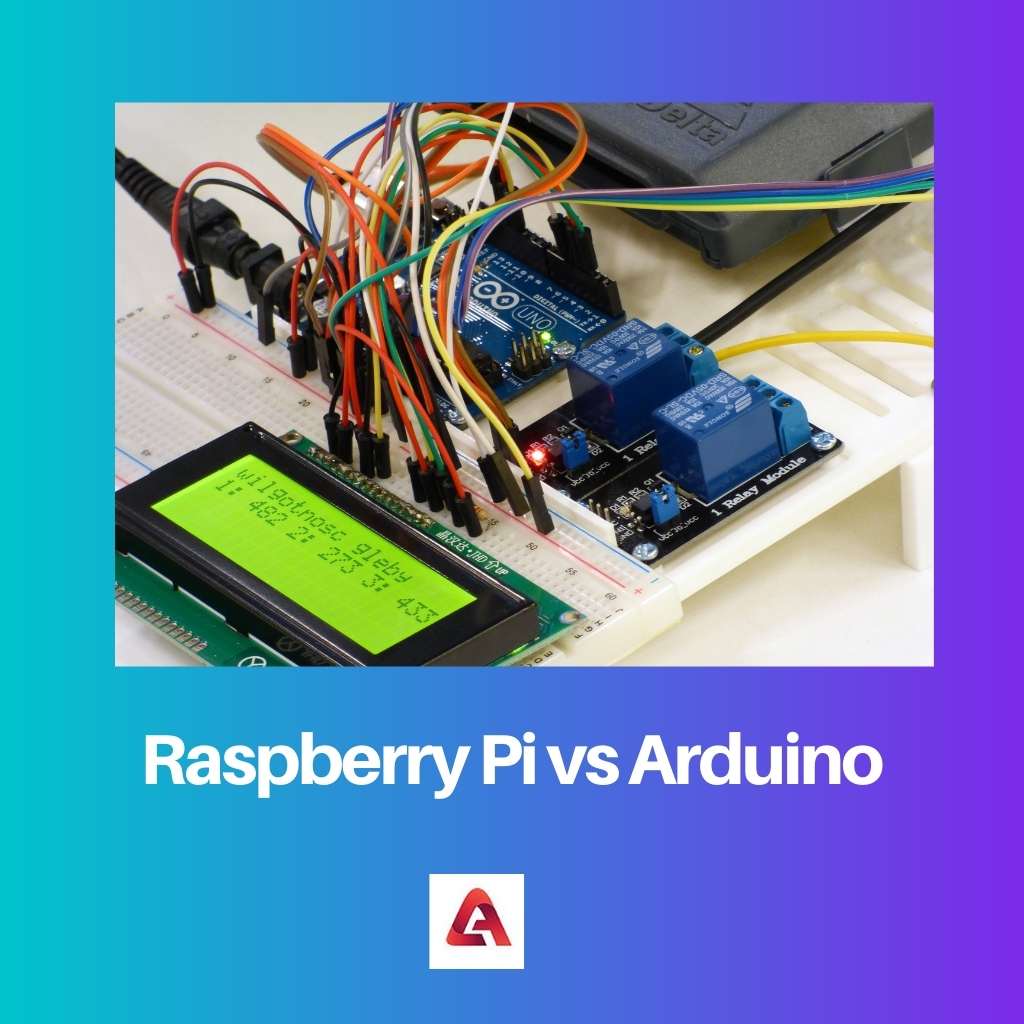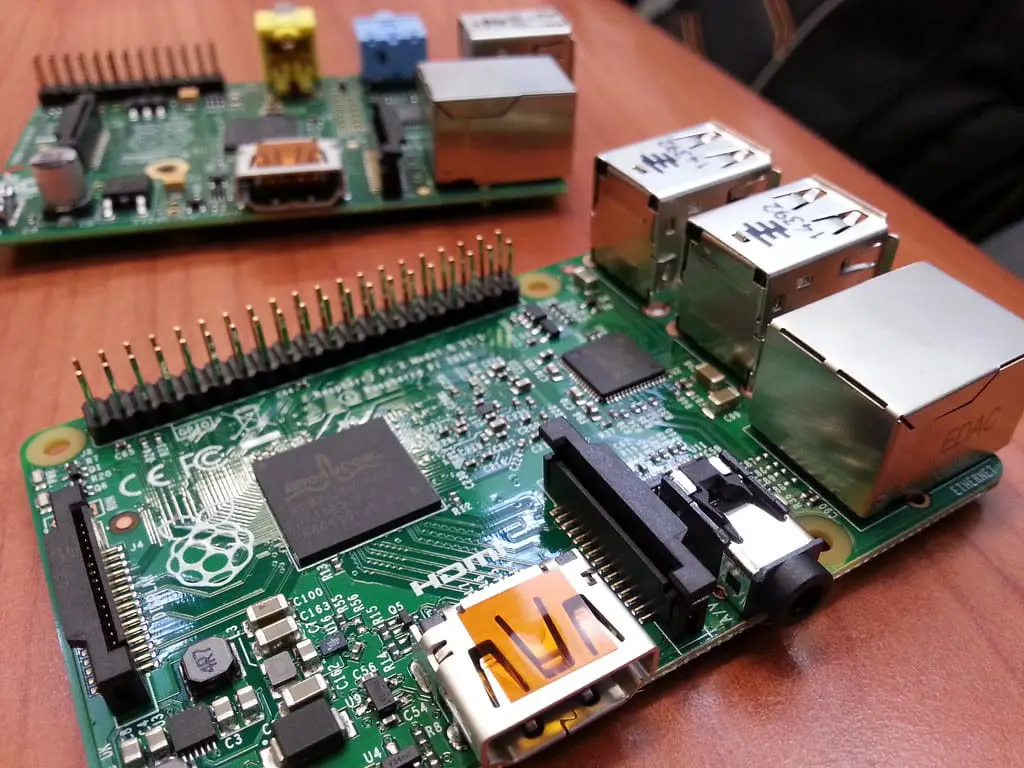Raspberry Pi and Arduino are two prominent devices for DIY enthusiasts, amateurs, and especially professionals’ panels. The Raspberry Pi and the Arduino are two distinct platforms.
While Arduino is designed for speedy development and circuit experimentation, Raspberry Pi is used as an instructional platform for computer software. At the same time, it may also be found in various DIY endeavours.
Each committee has its own set of benefits and drawbacks.
Key Takeaways
- Raspberry Pi is a mini-computer featuring a CPU, GPU, and RAM, suitable for complex computing tasks and programming in various languages.
- Arduino is a microcontroller board designed for simple, low-level tasks and programming in its native language, Wiring.
- Raspberry Pi offers more processing power, while Arduino excels in real-time control and interaction with hardware components.
Raspberry Pi vs Arduino
The difference between Raspberry Pi and Arduino is that a single supercomputer is the Raspberry Pi. The Raspberry Pi has a poor I/O, which necessitates using semiconductors to power the machinery. Raspberry Pi has a 64-bit CPU architectural design. Arduino is predicated on the AT ginormous range of microcontrollers and has a straightforward architecture and software framework. Arduino has powerful I/O capabilities that allow it to command additional hardware effectively. Arduino’s CPU layout is 8-bit.

The Raspberry Pi is a compact, utterly operational computer that can be connected to a computer display, among other things. Raspberry Pi OS, an improved edition of Linux, is its operating platform.
The Raspberry Pi has no storage, but precision SD chips can be used to store whichever operating system you want.
Because the Raspberry Pi has Bluetooth, Gigabit, and Wi-Fi access, it may be leveraged to transmit data over the web.
Arduino is a microcontroller electrical device that reads inputs and generates output depending on those factors.
Arduino was created at the Ivrea Interface Design Centre as a simple instrument for academics with no prior experience with electronics or computing.
After acquiring prominence, it began to evolve to meet new demands and obstacles.
Its basic and easy-to-use user interface has benefited many initiatives, from standard products to complicated scientific equipment.
Comparison Table
| Parameters of Comparison | Raspberry Pi | Arduino |
|---|---|---|
| Control Unit | The Raspberry Pi’s circuit board is an ARM processor. | Arduino’s circuit board is a member of the AT mega-series. |
| based | Raspberry Pi is a computer that runs on a microprocessor. | Arduino is a microcontroller-based platform. |
| Boards | Arduino devices offer a specific hardware and software design. | Arduino needs just two kB of RAM. |
| RAM | The Raspberry Pi demands 1 GB of RAM. | The Raspberry Pi runs on a core processor of 1.4 GHz. |
| Speed | The Raspberry Pi runs at a core processor of 1.4 GHz. | The computational power of Arduino is 16 MHz. |
What is Raspberry Pi?
Eben Upton of the College of Hertfordshire in Great Britain created the Raspberry Pi withto promote and enhance students’ computing abilities in impoverished nations.
The Raspberry Pi is a microprocessor-based chip that operates as a desktop; a microcontroller-based prototyping platform.
Like a personal computer, you may attach multiple accessories such as a monitor via HDMI or AV interface, input devices, access the internet, and integrate a webcam.
The Raspberry Pi and related analogous panels are called Single Board Systems because the complete computer, including the engine, RAM, storage, visuals, cables, and so on, is housed on a sole Integrated Computer Chip.
The Raspberry Pi might execute an operating system since it is a desktop.
The Raspberry Pi Association, which is accountable for inventing and maintaining the Raspberry Pi SBC, also offers the Raspberry Pi Software, a Debian-based Ubuntu variant.
Another advantage of the Raspberry Pi is that, because it is a Linux-based system, it can be programmed in various computing dialects, including C, C++, Python, Android, JavaScript, and others.
The Raspberry Pi Organization is constantly upgrading and providing innovative variants of Raspberry Pi attributable to its performance and attractiveness, the most recent of which is the Raspberry Pi 4 Type B.
Raspberry Pi’s industrial design documents and programming are not open-source.

What is Arduino?
Arduino is an open-source silicon and programming semiconductors prototyping device.
Arduino is a Microchip advancement board that may be used to flash LEDs, receive feedback from switches, receive statistics from detectors, drive motors, and do various additional microcontroller-related functions.
Regarding the engineering side of Arduino, all of the circuits can be configured in C and C++ through specific technology known as the Arduino IDE.
Arduino is a free and open-source platform. The Arduino IDE includes all of the necessary techniques for altering software code, assembling and manipulating the Arduino committee’s Microcontroller.
You must first develop the implementation software in a specialized IDE. The algorithm must then be compiled and a digital format in the form of a. hex document generated.
You must now use a converter application to submit the hex file to the intended Microcontroller employing specific hardware known as a developer.
With its plug-and-play method of rapid programming, Arduino made this procedure much more accessible. You may create the code, build it, and publish it to the Microcontroller using only one piece of application.
You won’t need any additional hardware to install the application. Connect the Arduino device to your computer via USB and press the upload key.
This implies that the architectural files for programs and frameworks and the static analysis are publicly available. You may use the circuit design data as a guide to creating your customized Arduino board.

Main Differences Between Raspberry Pi and Arduino
- Raspberry Pi evaluates data and generates useful outputs, as well as controls system elements depending on the results of its computing. At the same time, Arduino is used to manage the electrical elements that are attached to a system’s computer chip.
- Raspberry Pi uses roughly 700 MW of electricity. Arduino, on the other hand, uses around 200 MW of energy.
- The Raspberry Pi is ideal for creating Python-based software programs. In comparison, Arduino is great for connecting sensors and manipulating LEDs and actuators.
- The Raspberry Pi’s equipment, software, and apps may be damaged if the power is interrupted. In the case of Arduino, a power outage causes it to restart.
- The Raspberry Pi can do numerous jobs at the same time. In contrast, Arduino is most commonly used to replicate single and basic activities.

Last update on 2025-07-13 / Affiliate links / Images from Amazon Product Advertising API





![Arduino UNO R4 WiFi [ABX00087] – Renesas RA4M1 + ESP32-S3, Wi-Fi, Bluetooth, USB-C, CAN, 12-bit DAC, OP AMP, Qwiic Connector, 12x8 LED Matrix for Advanced IoT & Embedded Projects](https://m.media-amazon.com/images/I/416S910MpBL._SL160_.jpg)
